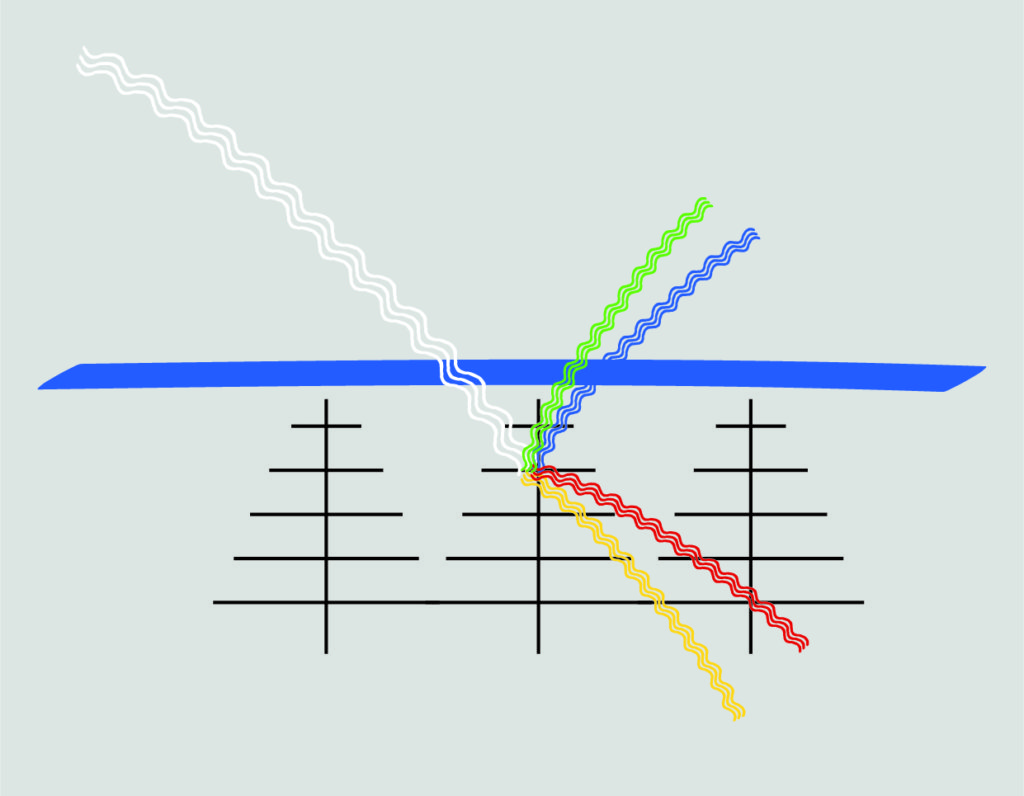A survey by the global platform YouGov revealed that today blue is the most loved colour in the world. Generally it conveys an idea of relaxation, calm and well-being perhaps because it is the colour of the sky, the sea and infinity.
Our eyes are able to see approximately one million colors, however, it is well-known that colour is not an inherent quality of objects but is an effect created by light. According to the characteristics of bodies, the light is reflected at different wavelengths and our eye interprets these as different colours.
If I asked you to close your eyes and think of any blue animal, what would you think of? A male peacock? A butterfly? The little fish Dori from movie “Finding Nemo”? Probably a lot of them would come to mind, but what if I told you that actually there are no truly blue animals, or almost? You would think that I have serious vision problems and I could not blame you.
The animal world surrounds us with a boundless amount of colours of all kinds used to communicate, defend, hide and woo partners.

Mechanisms through which animals produce dyes are more or less similar throughout the animal kingdom. The colours of the different structures such as skin, eyes, hair, feathers and scales are mainly due to the presence of specialized cells called chromatophores (melanocytes in mammals and birds). There are different types of chromatophores each of which contains a single particular pigment, some red, some yellow, others have dark shades and the various combinations of these create the different shades of colours that we are used to see in animals. It is peculiar, however, how it is almost impossible to obtain blue even from the combination of all these pigments.
So how do animals produce this colour? The answer comes from physics.

In fact, there is another type of chromatophore that does not have any pigments inside. These are the iridophores, reflecting cells in which the light is deflected and filtered through microscopic lamellae stacked and arranged in a way to separate light into different wavelengths. Most of these are absorbed by a layer of dark melanophores placed below the iridophores, but those between green and blue (whose wavelengths are just 30 nanometers away) are reflected. The reason is that the distance between these structures is selective for the wavelength of around 520 nanometers that is specific to bounce inside this framework and oriented in different directions. And this is why the light returned by these structures appears to us to be changing. If you think about it, in fact, most blue colours change slightly with movement (they have iridescence).

Other very obvious examples are in butterflies. You will surely all have in mind the beautiful blue Morpho (the butterfly emoji on your mobile phone). The microscopic structure of its wings is a lattice maden by thousands of rectangular cells arranged in a similar way to those of the peacock feathers.
You can observe the same phenomenon in many fish, such as the Blue Tang fish or the Blue Damselfish (picture 4 and 5).


At this point, someone would ask: why? Science still fails to give a clear and unambiguous answer, but it is possible that evolution found it easier and less expensive to change the shape of the body rather than upset the rules of chemistry.
There are actually some exceptions to this rule. In 1995 a paper published in Zoological Science found two vertebrate species (so far) that possess chromatophores containing a truly blue pigment. These are two small fish of the same genus much loved by aquarists, called mandarin goby fish (picture 6 and 7).


And what about plants?
Even in the plant kingdom it is difficult to find blue pigments, in fact, the flowers that show this colour are less than 10% out of about 280 thousand floral species. Plants have devised a slightly different system, using molecules called anthocyanins. These are red pigments that belong to flavonoids (often with antioxidant properties) which can turn from red to blue as the pH of the environment changes.

Those most passionate about gardening and floriculture know that to obtain blue hortensia you need to plant pink hortensia in a soil with an acidic pH (less than 6) added with aluminum sulphate. In 2017, after 13 years of trying, the Japanese team of Professor Nanobu Noda managed to create a blue chrysanthemum by modifying the plant’s DNA and the structure of its anthocyanins. Although it is also possible to obtain blue flowers and fruits, the genetic mechanism behind it is still unclear and, at the moment, scientists are trying to investigate the question.
Therefore, although it is the most popular colour, blue is quite rare among living beings and plants and animals have devised ingenious tricks to reproduce it. Maybe that’s why we like it so much.
References:
- Birren F. “Colore”. Marshall Editions; (1980)
- Lee D. “Nature’s Palette: The Science of Plant Color”. University of Chicago Press; Reprint edition (December 15, 2010)
- Goda, Makoto, and Ryozo Fujii. “Blue chromatophores in two species of callionymid fish.” Zoological science 12.6 (1995): 811-813.
- Goda, Makoto, and Ryozo Fujii. “The blue coloration of the common surgeonfish, Paracanthurus hepatus—II. Color revelation and color changes.” Zoological science 15.3 (1998): 323-333.
- Noda, Naonobu, et al. “Generation of blue chrysanthemums by anthocyanin B-ring hydroxylation and glucosylation and its coloration mechanism.” Science advances 3.7 (2017): e1602785.

